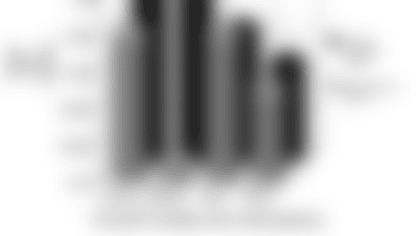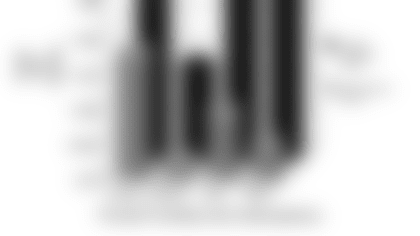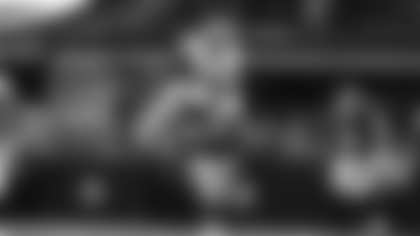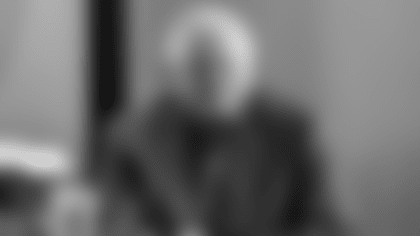When the Cowboys signed free agent cornerback Brandon Carr and selected the consensus top defensive player in the draft, cornerback Morris Claiborne, they figured they had dramatically boosted the play-making ability of their secondary. All of those passes that "should have" been intercepted in past years, we thought, finally would be.
The Cowboys have promptly responded with one interception through five games. And that pick, a batted ball, came from linebacker Sean Lee. So what's the issue in Big D? Why is the only defense that has given up fewer than 1,000 passing yards not generating the takeaways we all expected?
The biggest reason is that defensive coordinator Rob Ryan has scaled back some of his blitzes early in the season. I think specific matchups have had a lot to do with that; Ryan has felt as though the quarterbacks that Dallas has faced could consistently capitalize on a failed blitz attempt. Thus, we've seen the Cowboys play rather "vanilla" thus far in 2012, hence the spectacular defensive efficiency (in terms of yards) but low takeaway percentage.
No matter how you slice it, the Cowboys need to find a way to generate more turnovers. Defensive takeaways are strongly linked to team success, but the ball simply isn't finding its way into the hands of Cowboys defenders.
It's important to remember that turnovers are an inherently fluky stat. There are a relatively low number of them in a given season and oftentimes, as we saw in the Cowboys' Monday night loss to the Bears, they can sprout as the result of odd bounces of the ball or a blown route. That means that the Cowboys, owners of four total takeaways, will see a jump in the number of turnovers they force simply because it's improbable that they'll be as unlucky as they've been in the first five games.
That doesn't mean certain teams aren't better at creating turnovers than others, of course. While there aren't
a whole lot of predictors of defensive takeaways, the strongest, perhaps, is pressure. When defenses get to t
he quarterback, good things happen for them. Again and again, the teams that generate the most pressure also force the most turnovers.
Below, I've charted the interceptions and fumbles forced by the league's best and worst pass-rushing teams. The pressure stats are courtesy of Pro Football Focus.

You can see that the defenses that have reached the quarterback the most often in 2012 have also forced the most interceptions and fumbles. The top five teams in terms of total pressure have collected an astounding 21 more interceptions than the bottom five teams. Overall, NFL defenses have acquired an interception for every 9.18 pressures they've gotten on the quarterback, similar to the one interception for every 10.28 pressures defenses had in 2011.
To make sure 2012 hasn't been a fluke, I collected the same stats from 2011:

Again, you can see that those teams that sacked and pressured the quarterback often were much more likely to acquire takeaways. The bottom five teams in pressures from 2011 intercepted only two-thirds as many passes as the top five teams. Further, the rate of forced fumbles for defenses t
hat rushed the quarterback well, both in 2011 and this season, has been higher than for units that haven't reached the passer at a significant clip.
Interestingly, pressures have been more strongly correlated with takeaways than sacks. This could be a small hiccup in the data, but it's more l
ikely that pressure totals are simply more indicative of a defense's ability to rush the passer than sacks. Actually, I showed that way back in May when I used pressure totals to predict team sacks. Since pressures are a better indicator of pass-rush ability than sacks and pressures are strongly correlated with takeaways, it's very likely that as a defense's pass rush improves, so will there takeaway count.
So far this season, Dallas had 44 pressures, the eighth-worst mark in the NFL. Given league-wide pressure-to-interception rates, the Cowboys would typically have somewhere in the range of four to five interceptions at this point, so the fact that they're still stuck with a single pick shows just how unlucky they've been in the takeaway department.
Nonetheless, the Cowboys have to find a way to increase their pressures and sacks. Last year, the defense had 42 sacks under Rob Ryan. In 2012, they're on pace for just 32. The 13 teams that racked up 32 or fewer sacks in 2011 won an average of just 6.5 games. Not surprisingly, they totaled less than one interception per game.
There's no doubt that the Cowboys need their secondary to make some big plays, but the manner in which they accomplish that goal really starts up front. Without pressure, forcing interceptions and even fumbles becomes a whole lot more arduous. NFL quarterbacks that are given a clean pocket and plenty of time to throw don't generally toss the ball into the hands of a waiting defender. Whether they bring down the quarterback or not, the Cowboys need to at least get in the face of opposing passers to disrupt their rhythm.
Since Dallas hasn't gotten to the quarterback with just four rushers, chances are you'll see Ryan force the issue with some blitzes in an effort to create the "splash plays" needed to provide the offense with a short field. The Cowboys could surrender more big plays and their top-ranked pass defense might disappear in the process, but I'd be willing to bet my life's savings – check that, Tony Romo's life savings – that the Dallas secondary alone will have more than one interception in the next five games.














